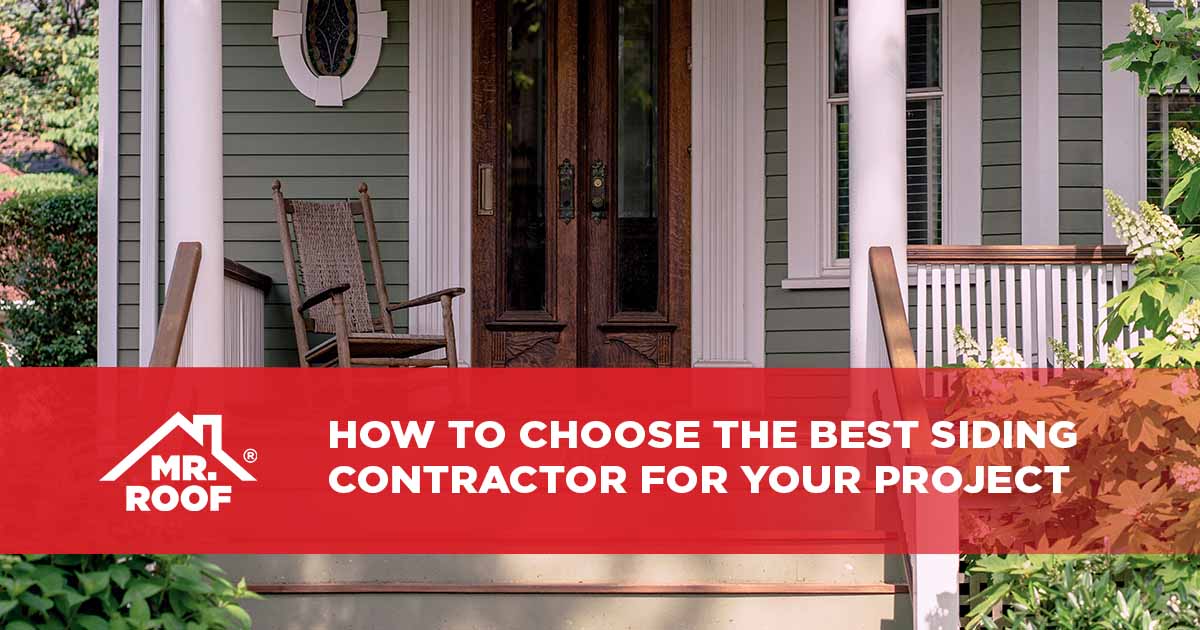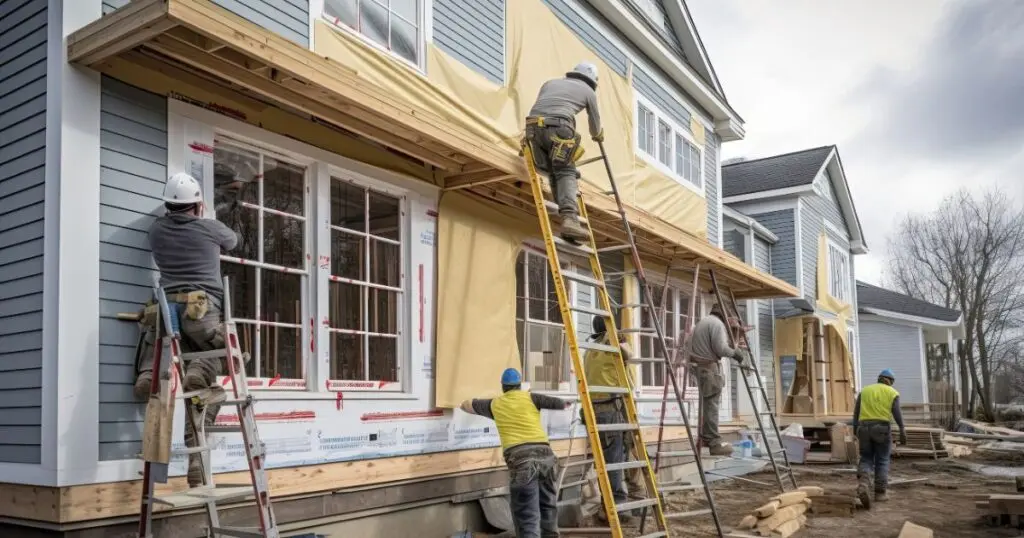Morris Siding Contractor Committed to Excellence in Every Project
Morris Siding Contractor Committed to Excellence in Every Project
Blog Article
The Important Overview to the Numerous Sorts Of House Siding and Their Distinct Advantages
In the world of home enhancement, choosing the best siding is an essential decision that impacts both aesthetic allure and useful efficiency. With so lots of choices to think about, which exterior siding material absolutely stands out for your details task?
Wood Exterior Siding
Wood house siding, a preferred option for domestic exteriors, supplies a classic aesthetic that combines all-natural charm with structural honesty. This home siding material is available in numerous styles, including clapboard, tiles, and board-and-batten, enabling homeowners to tailor their façade to match their design choices. Wood siding is typically crafted from sturdy types such as cedar, redwood, or pine, which are recognized for their durability and capacity to stand up to environmental stress factors.
One of the primary advantages of wood home siding is its outstanding insulation residential properties, which can add to power efficiency and reduced heating costs. Furthermore, timber home siding is biodegradable, making it an eco friendly choice when sourced sustainably. Regular maintenance, consisting of painting or discoloration, can prolong its life expectancy and boost its appearance, allowing house owners to protect the natural appeal of the wood.
Nevertheless, potential disadvantages consist of susceptibility to parasites, rot, and weather damage, demanding sufficient therapy and upkeep - morris siding contractor. Despite these worries, when effectively cared for, wood home siding can provide a lovely and durable option that boosts the character of a home while offering a warm, welcoming environment

Vinyl Siding
Plastic exterior siding has actually become a leading selection for property owners looking for a low-maintenance exterior alternative that integrates sturdiness and affordability. This flexible product is crafted from polyvinyl chloride (PVC), making it resistant to numerous weather, including wetness and UV rays. Therefore, plastic siding does not warp, rot, or fade, ensuring durable aesthetic charm.
One of the main benefits of vinyl siding is its comprehensive array of styles and shades, permitting house owners to achieve the wanted look for their property without the need for regular repainting. In addition, vinyl home siding is very easy to install, which can dramatically reduce labor expenses throughout construction or restoration tasks.
Plastic exterior siding likewise adds to energy efficiency. Lots of alternatives attribute insulation support, which enhances thermal performance, assisting to keep comfy interior temperatures and potentially lowering energy bills. Moreover, its smooth surface area promotes very easy cleaning, requiring only regular cleaning with a yard hose pipe to eliminate dust and particles.
Fiber Cement Exterior Siding
Fiber cement exterior siding has acquired traction among building contractors and house owners alike due to its amazing combination of longevity and visual convenience. Made up of a mix of cellulose, cement, and sand fibers, this house siding choice is engineered to hold up against extreme climate condition, including high winds, hefty rain, and temperature variations, making it a resilient choice for household outsides.
Among the primary advantages of fiber cement home siding is its resistance to pests, such as termites, and its non-combustible nature, offering improved fire safety and security. morris siding contractor. Furthermore, it is readily available in a broad selection of structures, shades, and styles, allowing property owners to attain their preferred visual without compromising efficiency
Another benefit is its low upkeep requirements; fiber cement house siding usually requires paint or staining every 5-10 years, which is less regular than various other materials. In addition, its longevity adds to a lower total expense of possession, as it decreases the requirement for regular fixings or replacements.
Eventually, fiber concrete house siding stands for an excellent investment for those seeking a resilient, appealing, and flexible exterior choice, integrating both kind and feature to boost the home's aesthetic allure.
Steel House Siding
The attraction of steel exterior siding lies in its robust sturdiness and modern visual charm, making it a preferred option for contemporary architecture. Offered in materials such as aluminum and steel, steel house siding supplies a series of colors and coatings, enabling property owners to attain an individualized look that complements their layout vision.

Energy effectiveness is one more considerable benefit, as lots of metal home siding products are developed with insulation choices that assist control indoor temperatures. This can lead to reduced energy prices with time. In addition, steel home siding is usually recyclable, making it an eco-friendly selection for sustainability-minded home owners.
The installment procedure for metal exterior siding can be relatively uncomplicated, causing a quicker turn-around time for building projects. Overall, steel home siding incorporates capability and style, making it a practical option for those looking for a visually appealing and long-lasting exterior finish.
Block and Stone Siding
Block and stone house siding attracts attention as an ageless choice that boosts the aesthetic charm of any kind of home. Understood for their sturdiness and low upkeep, these products offer an outstanding roi while elevating the property's aesthetic appeal. Readily available in numerous colors, textures, and patterns, block and stone can be customized to fit diverse architectural styles, from standard to modern-day.
Among the main benefits of block and stone home siding is their power performance. Both products have all-natural protecting residential or commercial properties that aid regulate indoor temperatures, potentially minimizing cooling and heating costs. Furthermore, they supply superior fire resistance compared to other home siding alternatives, adding to enhanced safety.
One more advantage is their long life. Block and rock can last for years, often requiring very little upkeep beyond occasional cleaning. Unlike wood home siding, they are invulnerable to parasites and rot, making certain a long-lasting exterior that withstands the elements.
Conclusion
In summary, the selection of exterior learn this here now siding considerably affects a home's aesthetic appeal, energy effectiveness, and maintenance requirements. Each sort of siding-- whether wood, plastic, fiber concrete, steel, or block and stone-- provides special advantages tailored to different house owner preferences and environmental conditions. Recognizing these alternatives allows notified decisions that improve both the sturdiness and visual charm of residential outsides. Inevitably, selecting the best siding is essential for attaining an equilibrium between functionality and layout in property architecture.
One of the key benefits of wood house siding is its outstanding insulation residential properties, which can contribute to energy performance and lower heating prices. Furthermore, get redirected here timber siding is naturally degradable, making it an eco friendly choice when sourced sustainably.One of the key benefits of metal house siding is its resistance to various ecological factors.Energy performance is an additional significant advantage, as several metal siding products are created with insulation alternatives that aid regulate indoor temperatures. Each type of home siding-- whether timber, plastic, fiber metal, cement, or brick and rock-- uses one-of-a-kind advantages customized to numerous homeowner preferences and environmental conditions.
Report this page